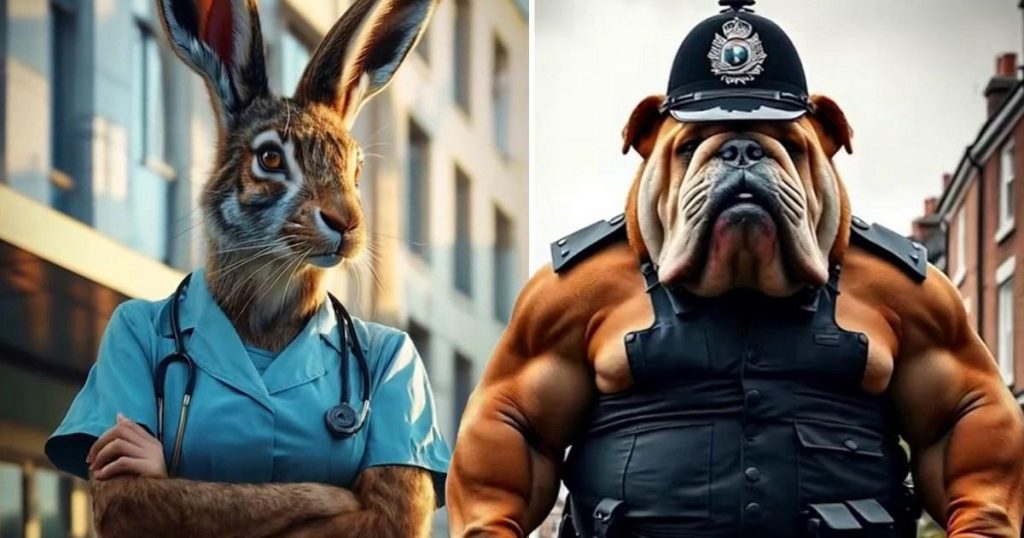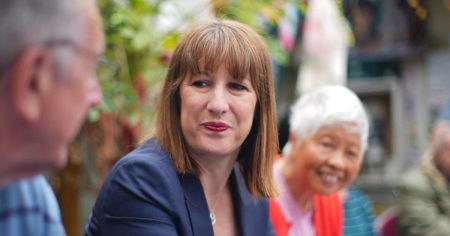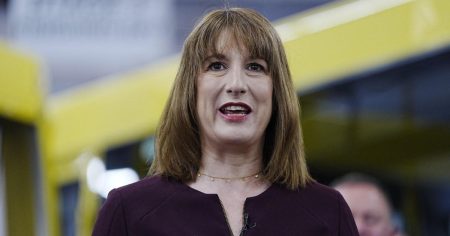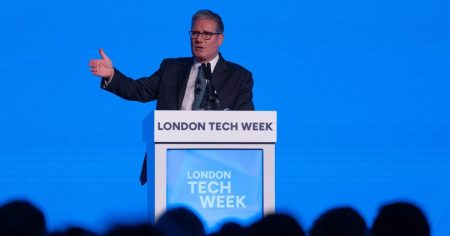The Labour Party has unveiled a novel and somewhat unsettling social media campaign strategy featuring AI-generated animals dressed as professionals to promote their policy platform on TikTok. The 30-second video, titled “Labour’s Plan to Change Britain (as animals),” showcases a menagerie of oversized creatures, including a lion as a politician, a bulldog as a police officer, a rabbit as a nurse, a badger commuting, an owl as a teacher, a hedgehog in overalls near a windmill, and a cow in construction attire. Set against a menacing musical backdrop, the video highlights key Labour policy positions, aiming to reach a younger demographic on the popular social media platform. However, the campaign has been met with mixed reactions, with some labeling it “embarrassing” and questioning its effectiveness, while others expressed concern over the use of AI-generated imagery in place of human artists.
The video opens with a life-sized lion, dressed as a Labour politician, standing outside the Houses of Parliament, setting a somewhat surreal tone for the presentation of policy promises. It then transitions through a series of AI-generated animals in various professional roles, each representing a different aspect of Labour’s proposed changes. The bulldog dressed as a police officer signifies increased police presence, while the rabbit in nurse scrubs highlights Labour’s plans for improving healthcare access and reducing waiting times. The commuting badger represents their commitment to better rail services through public control, a policy underscored by the recent re-nationalization of train services under Great British Rail. The giant owl symbolizes educational improvements, specifically funded breakfast clubs, while the hedgehog in overalls stands alongside a windmill, representing Labour’s focus on secure homegrown energy and the creation of a new public clean energy company, Great British Energy. Finally, a towering cow in construction attire underscores their commitment to building affordable homes, with an ambitious target of 1.5 million new homes by 2029.
The unconventional use of AI-generated animals and the imposing music accompanying the video have sparked significant discussion and criticism online. Many TikTok users expressed confusion over the campaign’s approach, questioning its effectiveness in conveying serious policy messages. Some speculated about the level of involvement from experienced campaign strategists, suggesting that an intern might have been responsible for the video’s creation. Others raised concerns about the use of AI-generated imagery, arguing that it displaces human artists and further marginalizes the arts sector. The Labour Party’s TikTok account has a history of employing unusual and attention-grabbing tactics, with previous examples including a dancing Grinch video referencing the upcoming election. This latest campaign, however, seems to have pushed the boundaries further, eliciting a stronger reaction from the online community.
The responses to Labour’s AI animal video underscore a wider debate about the role of social media in political campaigning and the evolving strategies employed to engage younger demographics. While some see the use of humor, trends, and visually striking content as effective ways to capture attention and disseminate key messages, others criticize such approaches as trivializing important political issues or alienating certain segments of the population. The Labour Party’s attempt to connect with younger voters through the popular medium of TikTok, utilizing AI-generated imagery and trending music, reflects the ongoing challenge of balancing accessibility and seriousness in political communication in the digital age. The mixed reactions to the campaign highlight the difficulty in predicting the effectiveness of unconventional strategies and the potential for misinterpretation or outright rejection by the target audience.
The criticism levelled at the Labour Party’s TikTok video extends beyond the mere aesthetics and perceived absurdity of the AI-generated animals. The campaign’s reliance on simplistic visuals and soundbites has been criticized for oversimplifying complex policy issues and failing to address the nuances of their proposed solutions. The use of a menacing soundtrack, coupled with the imposing size and somewhat unsettling appearance of the AI animals, has also been perceived by some as jarring and incongruous with the intended message. Moreover, the choice of animals themselves has been questioned, with some arguing that their symbolic representation of policy areas feels forced and lacks coherence. For instance, the connection between a hedgehog and green energy, or a cow and housebuilding, appears tenuous at best, potentially undermining the credibility of the campaign.
The Labour Party’s AI animal campaign highlights the ongoing challenges faced by political organizations in navigating the ever-evolving landscape of social media and digital communication. While platforms like TikTok offer unprecedented opportunities to reach vast audiences, particularly younger demographics, the competition for attention is fierce, and the effectiveness of traditional campaign strategies is often called into question. The use of humor, trends, and visually arresting content can be a double-edged sword, potentially capturing attention but also risking trivialization or misinterpretation of complex policy issues. Furthermore, the reliance on AI-generated imagery and other technological advancements raises ethical concerns about the displacement of human creativity and the potential for manipulation or misinformation. The mixed response to Labour’s campaign serves as a cautionary tale for political parties seeking to engage with voters in the digital age, emphasizing the need for carefully considered and nuanced strategies that resonate with the target audience without sacrificing substance or credibility.











